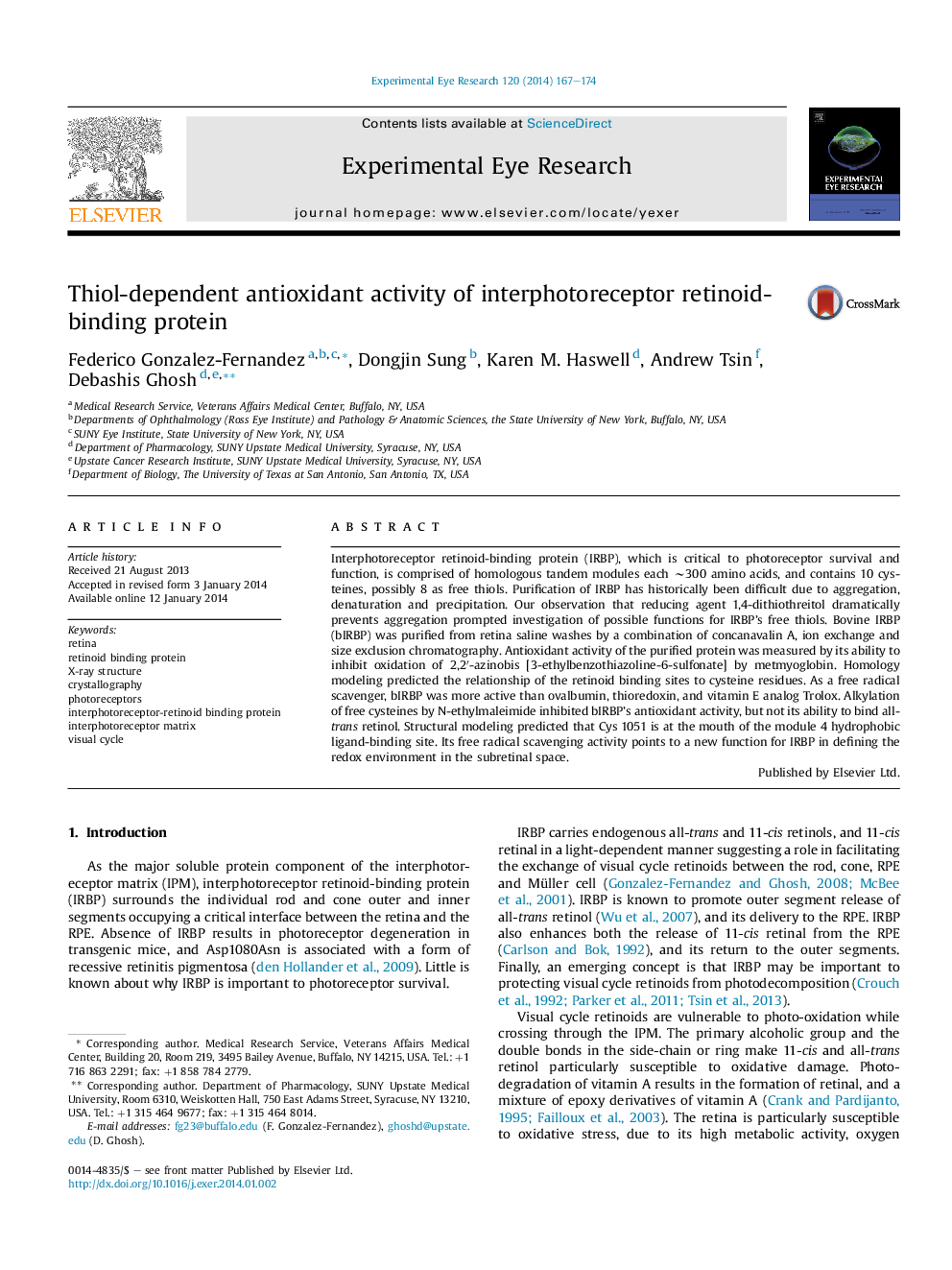| Article ID | Journal | Published Year | Pages | File Type |
|---|---|---|---|---|
| 6197082 | Experimental Eye Research | 2014 | 8 Pages |
â¢DTT prevents aggregation of IRBP allowing its crystallization.â¢IRBP is a thiol-dependent free radical scavenger.â¢IRBP may define the redox environment in the subretinal space.
Interphotoreceptor retinoid-binding protein (IRBP), which is critical to photoreceptor survival and function, is comprised of homologous tandem modules each â¼300 amino acids, and contains 10 cysteines, possibly 8 as free thiols. Purification of IRBP has historically been difficult due to aggregation, denaturation and precipitation. Our observation that reducing agent 1,4-dithiothreitol dramatically prevents aggregation prompted investigation of possible functions for IRBP's free thiols. Bovine IRBP (bIRBP) was purified from retina saline washes by a combination of concanavalin A, ion exchange and size exclusion chromatography. Antioxidant activity of the purified protein was measured by its ability to inhibit oxidation of 2,2â²-azinobis [3-ethylbenzothiazoline-6-sulfonate] by metmyoglobin. Homology modeling predicted the relationship of the retinoid binding sites to cysteine residues. As a free radical scavenger, bIRBP was more active than ovalbumin, thioredoxin, and vitamin E analog Trolox. Alkylation of free cysteines by N-ethylmaleimide inhibited bIRBP's antioxidant activity, but not its ability to bind all-trans retinol. Structural modeling predicted that Cys 1051 is at the mouth of the module 4 hydrophobic ligand-binding site. Its free radical scavenging activity points to a new function for IRBP in defining the redox environment in the subretinal space.
